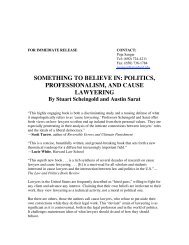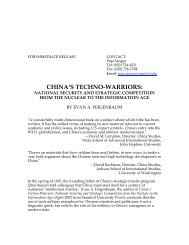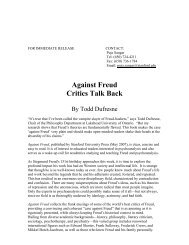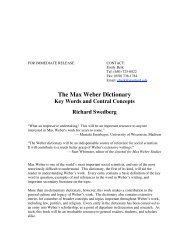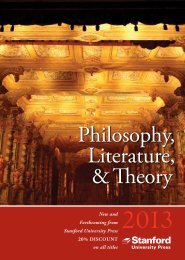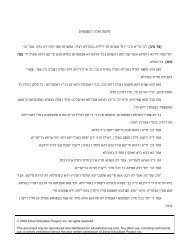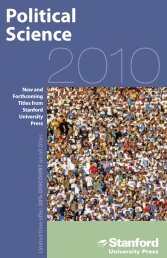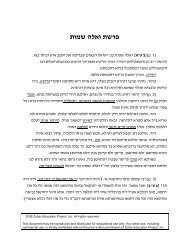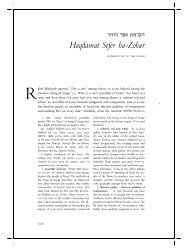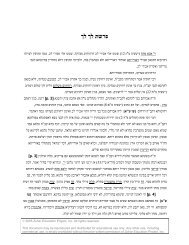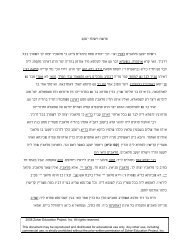Front Matter (PDF) - Stanford University Press
Front Matter (PDF) - Stanford University Press
Front Matter (PDF) - Stanford University Press
You also want an ePaper? Increase the reach of your titles
YUMPU automatically turns print PDFs into web optimized ePapers that Google loves.
volume. The standard Aramaic pagination of the Zohar is indicated in the<br />
this<br />
on each page (e.g., 1:34b).<br />
runninghead<br />
is no single right way to read and proceed through the Zohar, but I can<br />
There<br />
out certain features and suggest several guidelines.<br />
point<br />
of all, the Zohar is dynamicÐfull of surprises. Typically we ®nd that<br />
First<br />
Ḥiyya and Rabbi Yose were walkingon the way,'' wanderingthrough<br />
``Rabbi<br />
hills of Galilee, sharingsecrets of TorahÐbut also movingfrom one<br />
the<br />
to another, accompanied by Shekhinah, the Divine Presence Herself.<br />
dimension<br />
knows whom they will encounter on the road? A child amazes them with<br />
Who<br />
a beggar enriches them with precious teachings, a cantankerous old<br />
wisdom,<br />
turns out to be a sage in disguise.<br />
donkey-driver<br />
are about to enter an enchanted realm. Still, although the Zohar some-<br />
You<br />
reads like a mystical novel, remember that this is fundamentally a biblical<br />
times<br />
It's helpful to have a Bible at hand to check the original context,<br />
commentary.<br />
see how a particular verse becomes a springboard for the imagination. Every<br />
to<br />
pages we read: ``Rabbi Ḥiyya opened,'' ``Rabbi Yose opened,'' signifying<br />
few<br />
he is openingnot only his exposition but also the verse: disclosingnew<br />
that<br />
of meaning, expanding the range of interpretation. The reader of the<br />
layers<br />
should be open, tooÐopen to new ways of thinking and imagining. As<br />
Zohar<br />
Ḥavrayya (Companions) continually exclaim, ``Come and see!''<br />
the<br />
Zohar is ®rmly rooted in tradition but thrives on discovery. ``This verse<br />
The<br />
been discussed, but come and see!'' ``This verse has been established, but<br />
has<br />
and see!'' 32 ``Innovations of Torah are required here!'' 33 Innovation<br />
come<br />
through scrutinizing the biblical text, so questioning becomes a su-<br />
emerges<br />
value. After Rabbi Ḥizkiyah asks Rabbi Abba a challenging question, we<br />
preme<br />
told that ``Rabbi Abba came and kissed him.'' 34 Why? Because, as one<br />
are<br />
notes here, ``The question is half the answer; without a question,<br />
commentator<br />
is no reason for an answer.'' 35<br />
there<br />
when the meaningof a verse is perfectly clear, the Zohar may question<br />
Even<br />
structure, sometimes probingso deeply that the reader is stunned. To take<br />
its<br />
extreme example, come and see how Rabbi El'azar deals with the concluding<br />
an<br />
in the story of the Garden of Eden, which could hardly be more explicit:<br />
verse<br />
Zohar 1:56b, 112a, 136a, and frequently.<br />
32.<br />
Ibid., 155b.<br />
33.<br />
Ibid., 155a.<br />
34.<br />
Abraham Galante, in Or ha-Ḥammah, ad loc. On questioningin the Zohar, see<br />
35.<br />
``New-Ancient Words,'' 198±99.<br />
Matt,<br />
Genesis 3:24. Literally, He drove out the human.<br />
36.<br />
Translator's Introduction<br />
How to Read the Zohar<br />
xvii<br />
He drove out Adam. 36 ``We do not know who divorced whom: if the blessed



